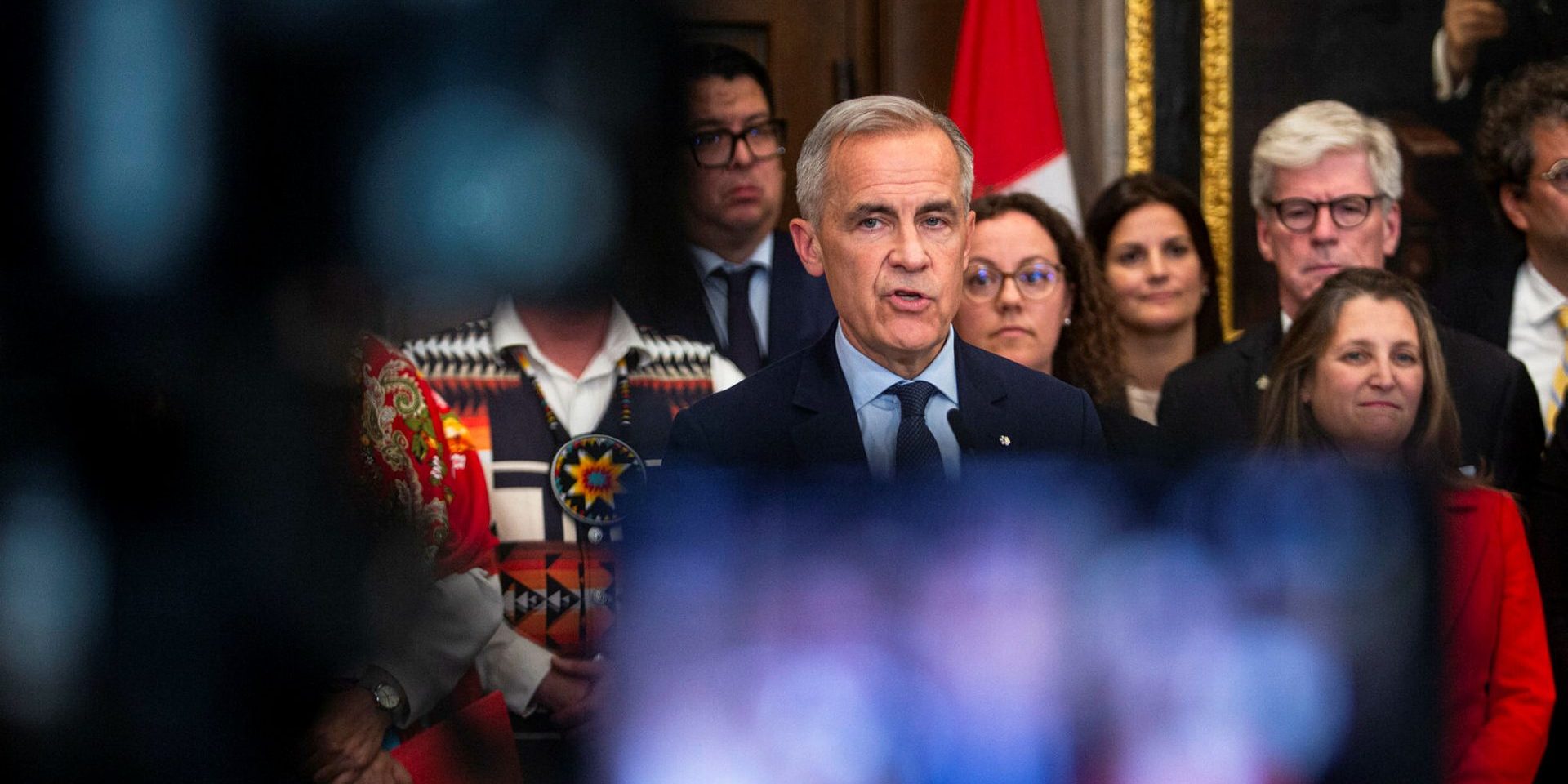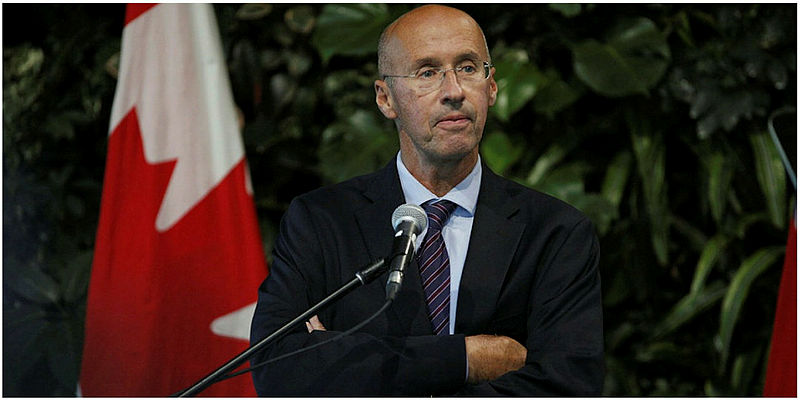Report forecasts ‘worst cuts to public service in modern history’ to meet Carney’s campaign pledge

Prime Minister Mark Carney’s election promise to cut $13-billion from the federal budget by 2028-29 could result in the worst spending cuts in modern history that would “inevitably diminish the quality of the public service,” a new report from the Canadian Centre for Policy Alternatives warns.
“This isn’t about attrition, or being more efficient,” David Macdonald, senior economist with the CCPA and the author of the report, said in an interview with The Hill Times. “These are deep cuts to staffing, deep cuts to services that will absolutely be noticed by regular Canadians.”
Carney’s (Nepean, Ont) election platform included balancing the operating budget via $13-billion in “productivity” cost-saving measures. Macdonald noted that amounts to a 10-per-cent cut of the entire federal government’s operating expenses. The Liberals’ recently-announced $9.3-billion defence spending pledge for this fiscal year likely means the Department of National Defence (DND) would be exempt from cuts, though it makes up 28 per cent of operational spending, Macdonald said.
The supplementary estimates, which were approved before rising for the summer, asked parliamentarians to approve an additional $8.2-billion for DND, and $370-million for the Communication Security Establishment.
“In my mind, there’s no way they’ll increase defence spending by $8.57-billion immediately, and then cut it … to get to these operational targets,” Macdonald said of those numbers. “In my mind, it’s clear DND spending is now protected from operational efficiency cuts. And that’s going to be a big problem for getting anywhere near $13-billion.”
Achieving the campaign pledge would mostly be done through slashing personnel expenditures in non-defence departments, Macdonald said, amounting to a cut of 24 per cent—drastically worse than then-Conservative prime minister Stephen Harper’s 10-per-cent cuts on some departments, and comparable to then-Liberal finance minister Paul Martin’s 1995 austerity budget, which reduced government spending significantly in order to tackle the country’s growing debt.
Cuts at this level won’t simply just be achieved by capping hiring or finding efficiencies via artificial intelligence, Macdonald said.
“For cuts this deep, it would require across-the-board job losses and major service reductions. In other words, if it proceeded, it would represent a major disruption to federal public services, and would rival the 18.9-per-cent cut in operation expenditures of Paul Martin’s 1995 budget as the most extreme budget slashing in Canadian history.”
The 2025 Liberal platform references achieving $28-billion in savings via direct program expenses, including capping the public service; reducing reliance on external consultants, automation, amalgamating service delivery, consolidating grants and contributions; and better managing litigation.
But previous budgets projected these “program expenses” to remain flat around $130-billion every year.
“The line isn’t growing with population or the economy. It means this budget line is already capped at zero growth,” the report says. “To get big savings going this route will require deep cuts.”
Macdonald warns of the “real dangers” of personnel cuts and substitutions with “completely untested” technologies like AI, which may sound good on paper.
“Just like the Phoenix [pay system] saga, you can end up in a very costly situation,” he said. “Then you’ve got to fix it all at great expense a year or two down the road.”
Ram Mathilakath, a former executive with the Parliamentary Budget Office, said big savings could be found simply in cutting the government’s consulting budget.
Macdonald’s analysis found cutting contracting would only result in $1.2-billion in savings, but Mathilakath said the number is closer to $7-billion.
“We pay double the price to consultants because the government is incompetent,” he told The Hill Times. “We don’t have the ability to assess the actual work and the confidence required.”
He said a “very top-heavy” public service could also withstand deep cuts to the executive cadre, which has grown by nearly 50 per cent since 2016.
Former parliamentary budget officer Kevin Page said the pressure is on for Carney to deliver a budget in the fall that delivers on campaign promises while meeting the commitment of balancing the operating budget, along with the prime minister’s recent NATO commitments. At last week’s summit of the military alliance, leaders agreed countries would reach five-per-cent of GDP spending on defence. That came just weeks after Carney committed to reaching the former two-per-cent target this fiscal year.
“It’s getting harder, not easier,” Page said, and cuts can’t just be limited to operating expenses and personnel. “The government is going to get bigger, not smaller,” he said. “The direct program spending base, because it includes the military, is actually going to get bigger.”
That means reallocation efforts will also have to be large, he said, and “you can’t just do this by cutting the size of the public service.”
Page noted while direct program spending is forecasted to remain flat, Macdonald’s analysis didn’t include the growth of the government’s spending since 2015.
“We’ve boosted the size of the public service. We boosted grants and contributions to a number of areas, the environment, Indigenous groups, others, industry,” he said. “We’re going to have to look at that.”

Carney’s platform focused largely on the cost of government operations, but Page said in the ensuing weeks, “there’s changing context around this,” citing Canada’s new commitments to NATO.
“This is going to be a real grind. There’s a lot to do.”
Page said he anticipates the fall budget to include a spending review process, which could take several years. The spending review isn’t an austerity measure, Page said, but rather an effort of “generating fiscal room that’s going to be reallocated to other priorities,” he said, including national defence.
Page said he believes Carney’s Liberals aren’t looking to just make cuts for the sake of hitting fiscal targets. And, given ever-changing geopolitical woes and the ongoing trade war with the United States, the government’s bottom line may grow more than expected. Carney has shown he’s prepared to increase capital spending to boost Canadian growth, said Page, citing the NATO pledge.
“I think we’re going to end up with higher spending … but we’re trying to find fiscal room to accommodate that.”
mglass@hilltimes.com
The Hill Times






 LICENSING
LICENSING PODCAST
PODCAST ALERTS
ALERTS













